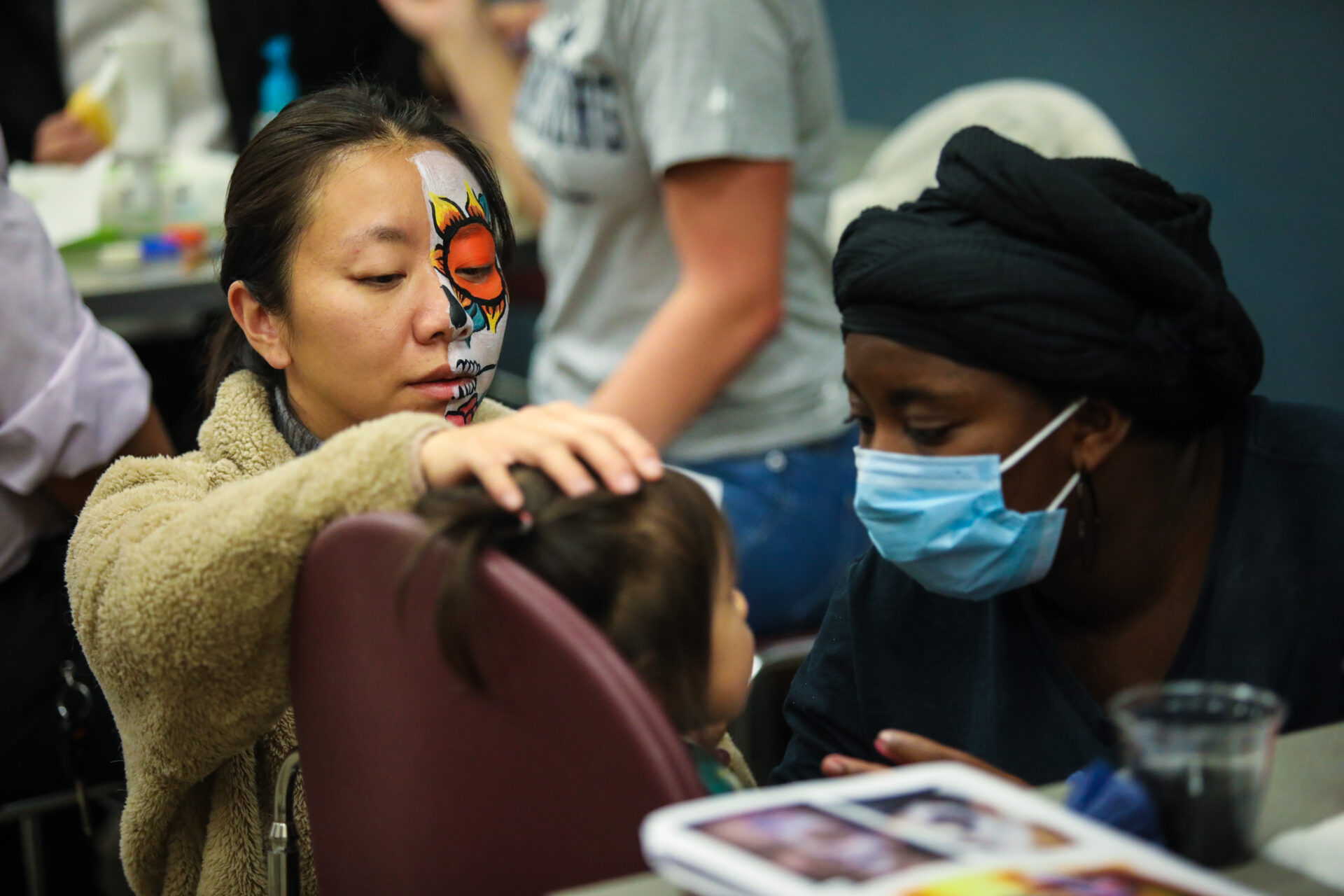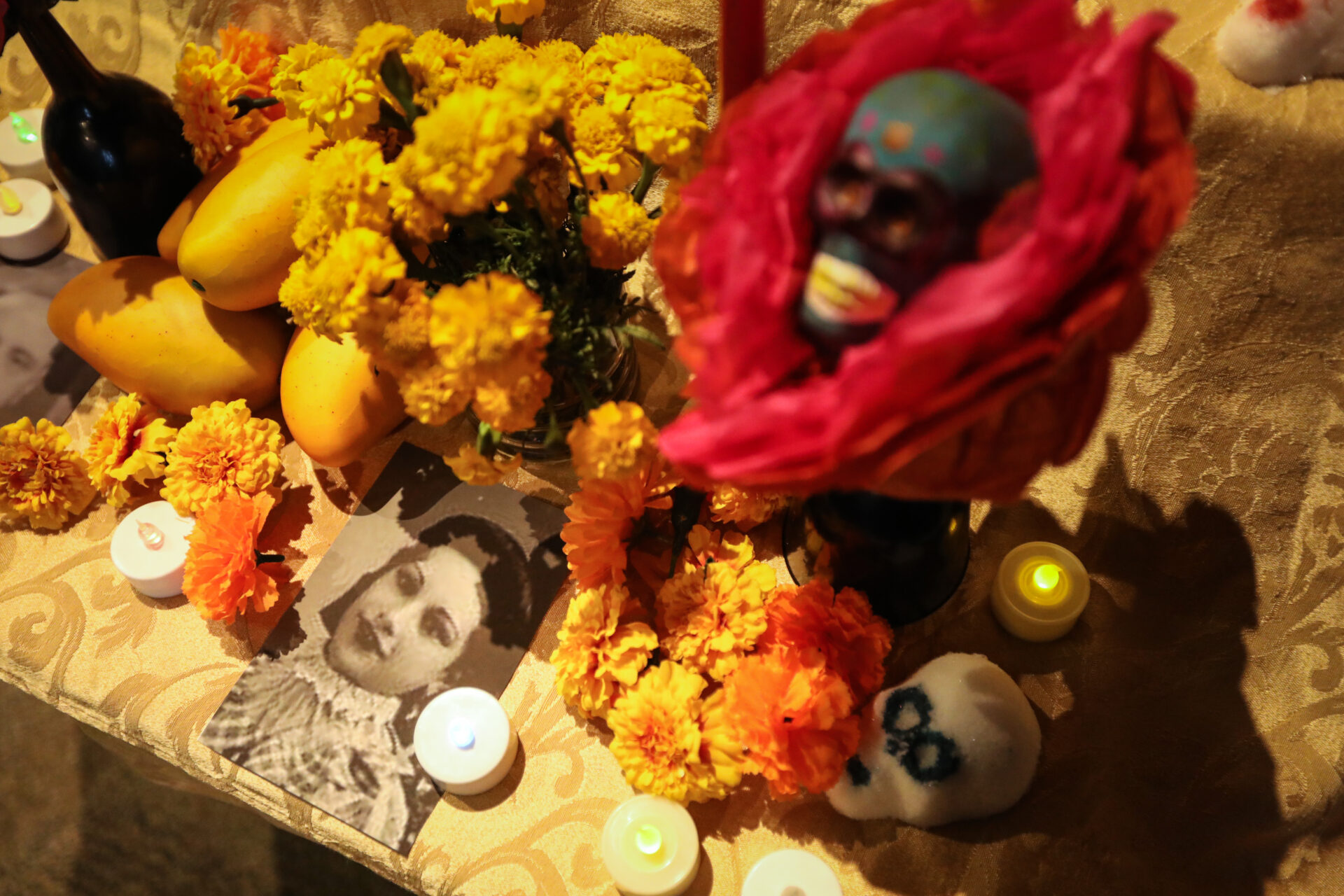
Orange and gold marigolds and intricate face paintings were in high demand Monday night as the BYU Museum of Peoples and Cultures celebrated Día de los Muertos.
Día de los Muertos, also known as Day of the Dead, originated from Mexico. This holiday focuses on celebrating death, as well as life and loved ones who have passed on.
The event catered to every age as there were many families there with small children, college students and the elderly. There were coloring pages, a photo booth and an area to create marigolds out of tissue paper.
Many people could be seen walking around with a paper marigold on their shirt or displaying a crown of marigolds attached to a headband.
Camila Martinez-Torres, a 15-year-old and president of the Spanish club at Lehi High School, said the flower headbands were her favorite craft at the event. “It took me a bit to figure it out but in the end, it was really fun,” she said.
Marigolds are an important part of the celebrations for Día de los Muertos because it is believed that the smell of the flowers will draw souls to the ofrenda.
Mandy Paulsen works as a graphic designer at the museum and helped guests create delicate paper marigolds. She said she hopes people will take away from this event a “cultural appreciation of Mexican culture and any kind of culture.”
There was an ofrenda at the entrance of the building that had pictures of loved ones who had passed and candles. The altar was decorated with marigolds, bread and various types of skulls — sugar and plastic.

The ofrenda, in particular, stood out to Mary Ann Schmidt, a 21-year-old from Arizona. She said she learned some interesting facts from the plaque next to it, such as the arch which symbolizes the headboard of those who have died.
“I love Día de los Muertos, I think it’s super cool and interesting. The event is about family history, I feel like it’s not really celebrated in other cultures,” Schmidt said.
There were many signs throughout the event that explained the symbolism behind different objects and clothing to teach guests more about the holiday and the culture.
Genesis Acuña Recabarren, a 15-year-old, and the vice president of the Spanish club at Lehi High School said she came to the event to help teach others at her school. “I’m Hispanic so we just wanted to show people our culture and teach other kids at our school what Día de los Muertos is all about,” she said.
Día de los Muertos is celebrated for two days, Nov. 1 and 2. The first day is for remembering the children and the second day is for the adults.
Universe reporter Abby Gunderson interviewed people in Provo to find out how they were celebrating Día de los Muertos.




